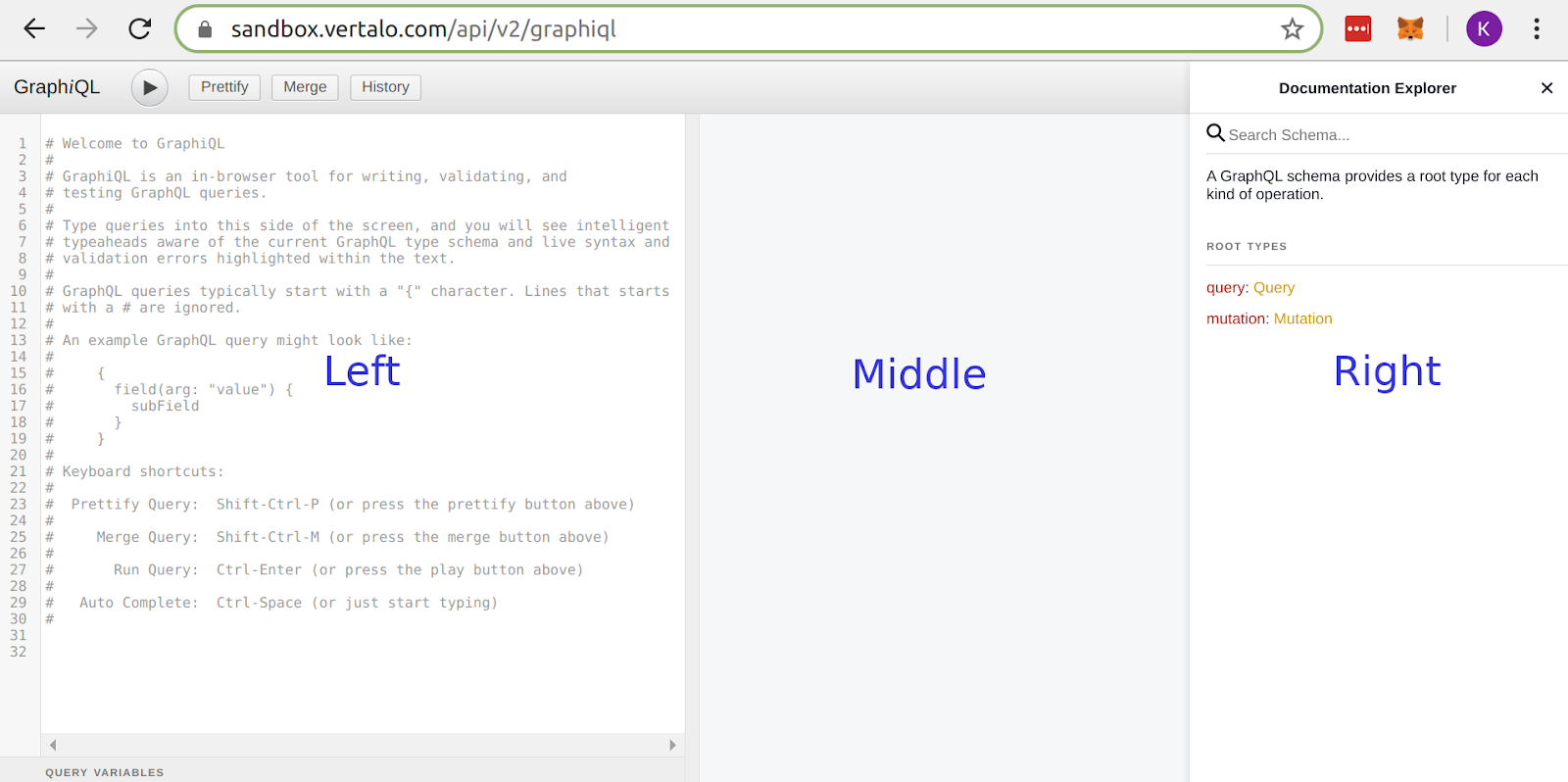Your starting point for exploring the Vertalo API is the Vertalo Sandbox. The Sandbox is a fully functioning version of our production environment and allows participants to model assets, rounds and other entities to investors in a safe and controlled manner. For an organization that is interested in leveraging the Vertalo API, the Sandbox also offers a way to explore and try out the API through an interactive interface. Follow these steps to access this environment:
- Login to your Sandbox account at https://sandbox.vertalo.com.
- Select an issuer or broker role. (Which one is available to you will depend on how your Sandbox has been set up.)
- Open a new browser tab (in the same browser) and go to https://sandbox.vertalo.com/api/v2/graphiql.
You will be presented with an interactive GraphQL explorer called GraphiQL. Using GraphiQL, you can compose and execute GraphQL queries and mutations. Most importantly, you have access to a documentation panel on the right side of the screen that exposes the entire GraphQL schema and Vertalo API.

- The left pane allows you to compose your query or mutation. (Clicking QUERY VARIABLES at the bottom of the pane will expand a window that allows you to enter variables referenced in the query/mutation.)
- The middle pane displays the results of your query or mutation.
- The right pane displays the Documentation Explorer and allows you to search and navigate the Vertalo API.
To execute a query or mutation you’ve composed in the left pane, click the “play” button just above the left pane.
IMPORTANT: The actions available to you in the API are entirely role-sensitive. For instance, the actions available to you in a “broker role” will be very different that those available to you in an “issuer role”. Role selection is possible through both the Vertalo user portal and during the authentication/authorization process with API keys.
IMPORTANT: There may be instances where, for a particular object, you see dual mutations in the API in the form of “make<Object>” and “create<Object>”. In these instances, use the “make<Object>” form. For example, use “makeRound” rather than “createRound”.